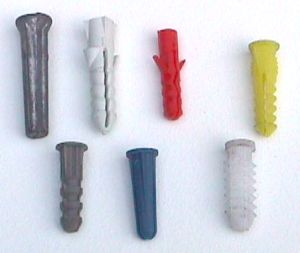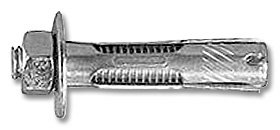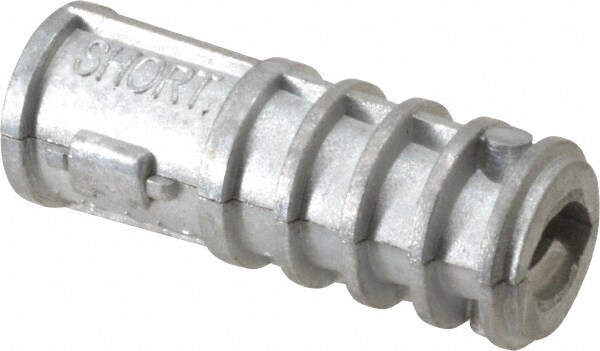|
Forgot how to dial the combination on that old safe? Think you got the right numbers but the handle is stuck? What safe should you buy? Ask your safe questions here!
Forum rules
You are posting this in This Old Safe, a public area of the forum.
Safe manipulation discussion is allowed, but safe drilling or other destructive entry is only allowed in the Advanced - Safes and Safe Locks area.
If you are a guest of the forum and have a safe you need to open, but you do not have the combination, we cannot tell you how or where to drill it.
 by nothumbs » 15 Sep 2015 15:24 by nothumbs » 15 Sep 2015 15:24
Been seriously considering a home safe. Goals are both theft and fire protection. Most likely location is in the attached garage, which has a concrete slab floor, and full fire sprinkler system. Would be used to hold important documents, jewellery, and as an optional consideration, hard drives with backups of important data. I've done a little research on the general topic, but would prefer to hear from the assembled experts on both the general topic and specific brand/model recommendations, plus any installation considerations. We are past the volume of material that a safe deposit box supports, so something in the 2-3 cubic foot range or larger seems required. Your thoughtful and informed commentary is solicited.
It's a good day when I learn something new.
-
nothumbs
-
- Posts: 475
- Joined: 22 Mar 2007 15:23
- Location: Northern California
 by cledry » 15 Sep 2015 17:55 by cledry » 15 Sep 2015 17:55
Look for a company called Sun Welding and look at their Heavy Heirloom safes. They are Made In USA and are full customizable and good value too.
Jim
-

cledry
-
- Posts: 2836
- Joined: 7 Mar 2009 23:29
- Location: Orlando
-
 by CMS_SAFECRAKR1 » 15 Sep 2015 20:21 by CMS_SAFECRAKR1 » 15 Sep 2015 20:21
Big sellers i like both for Fire and Burglar are Amsec's BF floor and BF series Gun safes.
If your on a budget Look into Hollon Safe. They have a series known as the FB Oyster Series. Half the price of the Amsec's and they have all the same features plus Glass plate relocker. Amsec makes theirs in the US, Hollon is made both in US and Korea.
Just my 2 cents
Don
-
CMS_SAFECRAKR1
-
- Posts: 76
- Joined: 7 Oct 2014 20:15
- Location: York, PA
 by Squelchtone » 15 Sep 2015 21:40 by Squelchtone » 15 Sep 2015 21:40
CMS_SAFECRAKR1 wrote:Big sellers i like both for Fire and Burglar are Amsec's BF floor and BF series Gun safes.
If your on a budget Look into Hollon Safe. They have a series known as the FB Oyster Series. Half the price of the Amsec's and they have all the same features plus Glass plate relocker. Amsec makes theirs in the US, Hollon is made both in US and Korea.
Just my 2 cents
Don
I'm also a big fan of the Amsec stuff http://www.amsecusa.com/fire-safes/bf-safes/, and I see Hollon in my ebay searches all the time, here's one example: http://www.ebay.com/itm/111759091293What's your take on Gardall BF safes such as the BF1812 ? good thread, Squelchtone
-

Squelchtone
- Site Admin
-
- Posts: 11332
- Joined: 11 May 2006 0:41
- Location: right behind you.
 by dll932 » 16 Sep 2015 9:36 by dll932 » 16 Sep 2015 9:36
Are you on a flood plain? If there is a chance you might get flooded, put the docs and stuff in watertight containers (with silica gel packets) inside the safe. Bolt the safe to the floor with lag screws and shields. You can get a used safe, but if it's been drilled open and repaired, it's no longer UL certified, if that's important to your insurance. I would hide the safe in some kind of enclosure-you can buy them or make one.
-
dll932
-
- Posts: 454
- Joined: 31 Mar 2013 22:42
- Location: Euclid, Ohio USA
 by nothumbs » 16 Sep 2015 19:35 by nothumbs » 16 Sep 2015 19:35
I'm curious to get more info on the issue of securing the safe to the floor. Some safes have a single mounting hole, some have two (with options for up to four). Given that this is mounting to a cement slab, is a single lag bolt sufficient? Is there more than one type of lag bolt to consider, and should some sort of adhesive be added during the install? I'm not in a flood zone, and the only likely source of water would be a fire that triggered the sprinkler system (there are two in the garage, the likely location of the install). I've not tested or checked the slope of that floor, perhaps I should, although I understand most of these safes have expanding seals in case of fire. It seems there would be trade-off between raising the safe off the floor during mounting (which would leave room for a pry bar) which might offer some protection against flooding, and a more secure mount. with no gaps.
Still unclear on the trade-off between a traditional dial and electronic version.
Thanks to all who have contributed so far, been educational.
It's a good day when I learn something new.
-
nothumbs
-
- Posts: 475
- Joined: 22 Mar 2007 15:23
- Location: Northern California
 by billdeserthills » 16 Sep 2015 21:39 by billdeserthills » 16 Sep 2015 21:39
I think bolting down the safe is a waste of time. Any self-respecting burglar comes equipped with a crowbar and will
simply pop your safe up & run away with it. Better you should get a heavy gunsafe, 600 pounds or more. That way you
can expect to see it still there when you get home, plus you get all the extra room to store your paperwork & valuables
-
billdeserthills
-
- Posts: 3847
- Joined: 19 Mar 2014 21:11
- Location: Arizona
 by GWiens2001 » 16 Sep 2015 21:55 by GWiens2001 » 16 Sep 2015 21:55
The more bolts you use, the more solid the install, and the harder it is for a criminal to steal your safe. There are more than one kind of concrete anchor, which can be found at your local hardware store. They will require drilling holes into the concrete (so post-tension slabs might be a problem). There are plastic sleeves - a waste for this kind of installation, so don't waste your time with them.  Moly-type anchors in which the anchor is placed in the hole, then the bolt threads into the bottom of the anchor. When the bolt is tightened, it draws the bottom of the anchor up towards the top, expanding the middle part, locking it firmly in place.  There are anchors in which a stud is pulled up into the split end of metal sleeves. These can be tricky to install through the holes in the bottom of a heavy safe.  And there is the kind that I like, with two halves of a sleeve. The outer halves have ribs to grab the hole (for her pleasure), and the inside has very course threads. You screw a lag bolt into the sleeve, and it forces the two halves out, providing a very strong hold.  There are many other kinds of anchors, and everybody has their own choices, and there is a purpose for every style. Am sure other people here with far more safe experience than myself will be giving better tips and advise. But there is a small intro to the anchors. Gordon Just when you finally think you have learned it all, that is when you learn that you don't know anything yet.
-

GWiens2001
- Site Admin
-
- Posts: 7595
- Joined: 3 Sep 2012 16:24
- Location: Arizona, United States
 by billdeserthills » 16 Sep 2015 22:13 by billdeserthills » 16 Sep 2015 22:13
Unfortunately Gordon the more holes you drill into a fire safe, the less fireproof your safe will be.
You must never drill a hole into a fireproof safe, if the factory provides you with one hole for a hold down,
that is what you get. Sometimes you can remove the wheels and get four places to install mounts and when
you are done don't come to tell me that someone made your safe disappear overnight.
Now if you really want to be paranoid, get a jackhammer and put a big enough hole into the floor for some
heavy chain, and cement it into place. Of course I prefer to simply get a heavier safe. For example I own two
of Amsec's BF Series gun safes, one weights 885 pounds and the other is closer to 1800 pounds. I can be reasonably
sure that they will be where I left them, when I come home at night.
-
billdeserthills
-
- Posts: 3847
- Joined: 19 Mar 2014 21:11
- Location: Arizona
 by Robotnik » 16 Sep 2015 22:22 by Robotnik » 16 Sep 2015 22:22
GWiens2001 wrote:They will require drilling holes into the concrete (so post-tension slabs might be a problem).
Oh Lord...so many people don't know PT slab exists, and act accordingly. Once you nick those cables, it gets expensive, I assure you. Good looking out  .
-
Robotnik
- Supporter

-
- Posts: 668
- Joined: 3 Aug 2014 16:21
- Location: Portland, Oregon, United States
 by billdeserthills » 16 Sep 2015 22:27 by billdeserthills » 16 Sep 2015 22:27
Robotnik wrote:GWiens2001 wrote:They will require drilling holes into the concrete (so post-tension slabs might be a problem).
Oh Lord...so many people don't know PT slab exists, and act accordingly. Once you nick those cables, it gets expensive, I assure you. Good looking out  .
Just one more real good reason to stay away from the concrete slabs. In the past, when I find a post-tension slab I notify the owner. Last time the guy wanted an in the floor safe installed & I let him pay the concrete coring company to make the hole. Installing the safe was easy enough and no risk, at that point
-
billdeserthills
-
- Posts: 3847
- Joined: 19 Mar 2014 21:11
- Location: Arizona
 by GWiens2001 » 16 Sep 2015 22:46 by GWiens2001 » 16 Sep 2015 22:46
billdeserthills wrote:Unfortunately Gordon the more holes you drill into a fire safe, the less fireproof your safe will be.
You must never drill a hole into a fireproof safe, if the factory provides you with one hole for a hold down,
that is what you get. Sometimes you can remove the wheels and get four places to install mounts and when
you are done don't come to tell me that someone made your safe disappear overnight.
Agreed, Bill. Don't drill more holes. Just that if there are already holes in the safe, take full advantage of them. Also agree about heavy safes. Mine was delivered on a tow truck - and weighs more than some of the cars I work on.  Gordon Just when you finally think you have learned it all, that is when you learn that you don't know anything yet.
-

GWiens2001
- Site Admin
-
- Posts: 7595
- Joined: 3 Sep 2012 16:24
- Location: Arizona, United States
 by kwoswalt99- » 16 Sep 2015 22:52 by kwoswalt99- » 16 Sep 2015 22:52
How do holes decrease the fire resistance? When mounted on a slab, I don't see how that much heat could get through there. If you're really really paranoid, you might as well get one of these.   overkill overkill
-
kwoswalt99-
-
- Posts: 1218
- Joined: 17 Mar 2015 15:35
- Location: Somewhere.
 by Squelchtone » 17 Sep 2015 8:01 by Squelchtone » 17 Sep 2015 8:01
Robotnik wrote:GWiens2001 wrote:They will require drilling holes into the concrete (so post-tension slabs might be a problem).
Oh Lord...so many people don't know PT slab exists, and act accordingly. Once you nick those cables, it gets expensive, I assure you. Good looking out  .
A buddy of mine owns a condo on the 14th floor of a big skyrise in Florida. His wife wanted to totally redo their bathroom and it called for moving the shower drain across the room 6 feet over. The general contractor called out a plumber to chisel/core a channel for the new piping and the plumber said, I have penetrating radar, do you want me to scan the floor so we don't run into anything, it's only $300 for me to scan it, and the GC said nah, no worries, one less expense. Sure enough they hit a post tensioned cable, which proceeded to shoot out of the building at high speed, and impale itself into the adjacent building with the metal sticking 4 feet into the other building!  Luckily insurance covered all repairs, and the cable was originally in a conduit instead of directly in poured concrete where it would have been a real chore to put a new cable in and tension it. As far as your garage slab, I wanna say if it's on the ground floor, it might have rebar mesh, but cant see why they would post/pre tension a ground slab (not that I know what I'm talking about when it comes to pouring concrete and building houses) but if you are comfortable making a 6 inch hole a couple inches wide, put a 12 inch threaded rod inside the hold with alternating fender washers and nuts on the rod, pour concrete into the hole which will go all around the rod, washers, and bolts, and then you have 6 inches of threaded rod sticking out of the concrete floor that cannot be yanked out after the concrete sets. Then sit the safe and its bottom hole on top of that and put a metal plate with a hole it in over the threaded rod inside the safe and a bunch of washers and nuts. I've never tested or done this, it's purely an idea. Squelchtone 
-

Squelchtone
- Site Admin
-
- Posts: 11332
- Joined: 11 May 2006 0:41
- Location: right behind you.
 by GWiens2001 » 17 Sep 2015 8:11 by GWiens2001 » 17 Sep 2015 8:11
Most of the homes made these days in my area have post tension slabs, even though they are all poured on the ground (in forms, of course). Wow - that $300 charge seems like it would have been cheap insurance.  Gordon Just when you finally think you have learned it all, that is when you learn that you don't know anything yet.
-

GWiens2001
- Site Admin
-
- Posts: 7595
- Joined: 3 Sep 2012 16:24
- Location: Arizona, United States
Return to This Old Safe
Who is online
Users browsing this forum: No registered users and 0 guests
|
